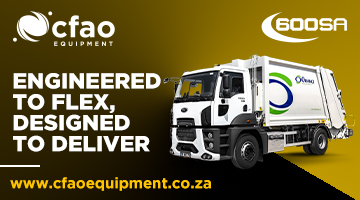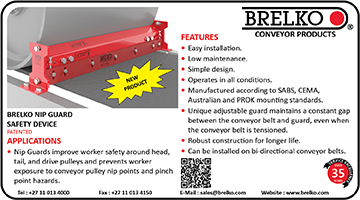Heman Kassan, Chief Commercial Officer of Technodyn
Growing at more than 9%, the global enterprise resource planning (ERP) software market size is expected to top $93 billion by 2028. Now consider projections that the market value of the smart mining industry will break the $20 billion mark at the end of 2025. ERP can potentially play a crucial role in bridging the gap between advanced technologies and legacy systems to optimise mining operations.
 But if this is to be successful, especially at a local level, one of the most significant barriers to mining transformation and innovation must be addressed – system fragmentation. Even today, very few mines have a single source of truth providing timely and reliable data about the business. This is even worse when it comes to using a single platform to standardise processes consistently across the organisation. Software applications and the data being generated are fragmented across the mining environment.
But if this is to be successful, especially at a local level, one of the most significant barriers to mining transformation and innovation must be addressed – system fragmentation. Even today, very few mines have a single source of truth providing timely and reliable data about the business. This is even worse when it comes to using a single platform to standardise processes consistently across the organisation. Software applications and the data being generated are fragmented across the mining environment.
Further exacerbating this is the fact that mines use multiple ERP, enterprise asset management (EAM), project management, and workforce planning and scheduling optimisation solutions. Simply put, there is no cohesion when it comes to the technology and data real estate of a mine.
Because mining is asset-intensive, companies must often choose between replacing an expensive and heavily customised ERP system or buying an additional solution capable of enhancing projects from a technology perspective. It is hardly surprising that the latter is often chosen, adding complexity to the IT environment. Furthermore, many mining houses have multiple, overlapping ERP and other enterprise software systems inherited from companies and operating divisions they acquired along the way.
Providing operational excellence
Generally, all mines operate similarly and employ strategies that are not that different. To really stand out and drive operational excellence, a mine must consider a technology-centric approach where ERP solutions can be used optimally by integrating the likes of EAM and geographic information system (GIS) to streamline the likes of exploration and feasibility studies, enhance operations and maintenance, and take care of regulatory compliance and financial analysis to improve the lifecycle of a mine
consistently.
Being agile and acting fast to optimise production capacity and maximise profitability can only be done if a mining company operates from an integrated environment. Systems, processes, and data must be integrated to provide decision-makers with the insights needed to shape strategy as quickly as possible. The sooner mining companies can derive value from their investments, the better.
Doing things intelligently
This creates the impetus for a new age of growth in ERP solutions at local mines, where data-driven insights are used to provide mines with complete visibility over their operations. Mines must understand the need for a centralised data infrastructure that allows them to have complete, aligned oversight across their processes to embrace the power of intelligent data truly.
With global supply chains going to take a while to return to normal due to the pandemic and the recent developments in Ukraine putting even more pressure on the oil price, the impact will be hard felt across diesel fuel and food production prices for the foreseeable future. Mines need foresight to pre-emptively manage these disruptions.
To this end, mining companies must adopt greater oversight on product lifecycle management at every point of the supply chain. Insights drawn from intelligent data can allow mining houses to reap the benefits in the long run.
Many mines believe they have the right foundation but are still reliant on complex and disparate systems that are inefficient in gaining real-time oversight of processes. Therefore, creating a digital infrastructure that optimises efficiencies through the likes of ERP, EAM, and even artificial intelligence will create greater transparency while driving new efficiencies that extend product and asset lifecycles, reduce waste, and provide feedback mechanisms to support the circular economy.
Technology enabler
Technology and a digital business model will help mining companies identify new revenue streams and give them the flexibility to develop and respond to changing market conditions. Already, traditional industries such as manufacturing and construction have introduced service revenue streams to their business models and use technology to aid success on this journey.
For their part, mines rely on technology to play a vital part in continuing a sustainable and profitable operation without lowering safety and efficiency requirements. Mines are used to operating across geographical borders and understand the importance of mobility and flexibility. The glue tying all this together is ERP solutions.
Mining efficiency will be harnessed via capturing, interpreting, and operationalising large amounts of data. Owning the data will be as important as sharing the data. Streamlining has come a long way for mining houses, but there is still a long journey ahead. For now, the key remains to use modern ERP to integrate what has been put in place and draw the insights needed to shape the future direction of mining.










